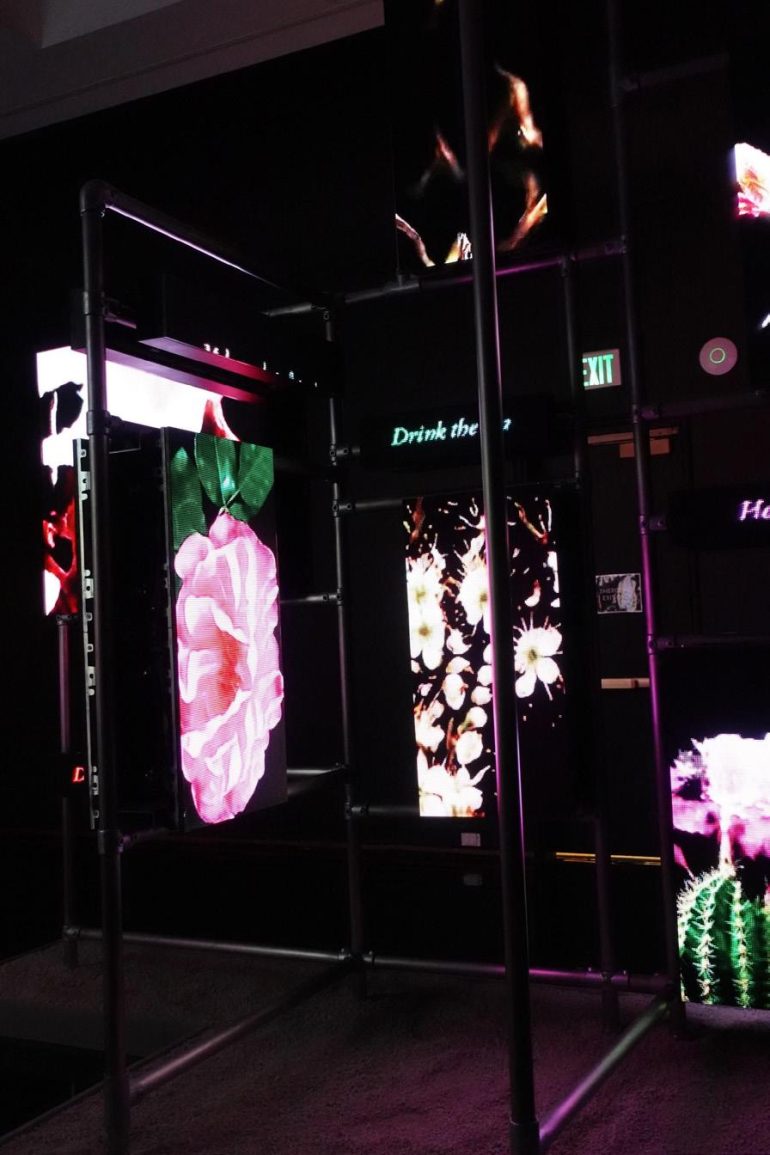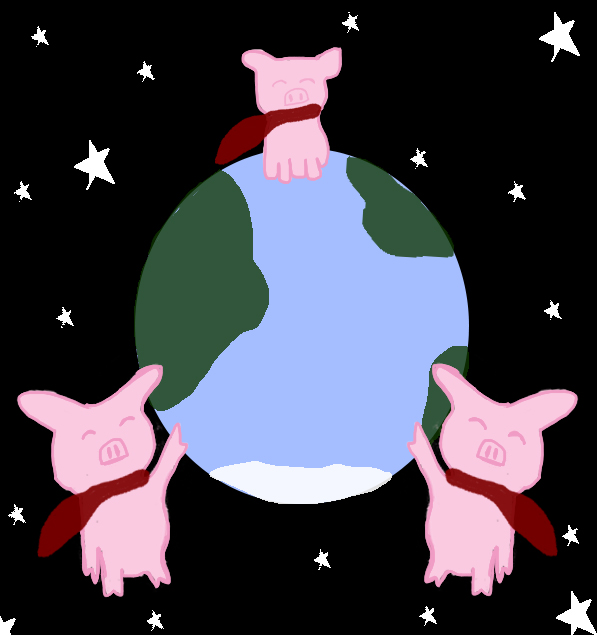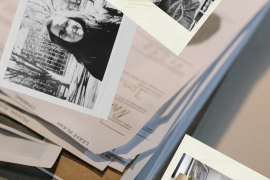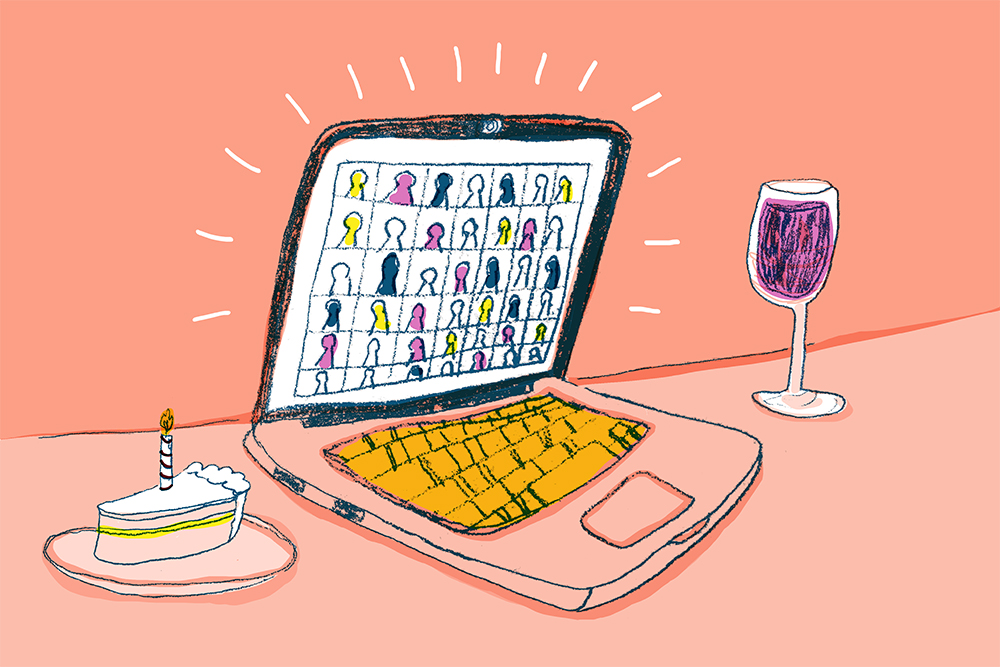When I arrive at the Portland Art Museum there are at least five school buses. The museum is loud with high schoolers, puzzling over rubix cubes and striding purposefully through the halls. Their shoes and voices bounce from the marble floor and columns, making it feel like they are more numerous than they really are. The sun is out; the park blocks hum with the activity of a Wednesday-afternoon farmer’s market; I have just eaten Polish food for the first time.
The exhibit is oppressively dark. Its entrance, around the corner on the second floor, on the mezzanine, is reminiscent of a nightclub—a mouth opening down a black spartan hallway, rear wall emblazoned with a logo: “This is the Future” in faux-calligraphy 3-D printed script. Vaguely European dance music emanates from the depths. The first piece I encounter after entering the dark mouth of the exhibit, the titular work, is a psychedelic— botanist’s nightmare—fashion show—anti-capitalist— pro-environmental-terror experience. Experience is the best word to describe it. Distorted images, which I later find out have been created using machine learning, remind me of a music visualizer on a classroom computer running Windows XP. Distorted images crawl over a screen and infiltrate the brain, massaging the occipital lobe. The video-images are of amorphous plants and landscapes, distorted Stonehenge, city streets that flicker and shift—Shibuya? Times Square? Berlin?
Around the corner, more screens, these not cast from a projector as the last was, but made of tiny fake LEDs, to give the impression of an outdoor marquee or a scrolling stock-price updater or a programmable billboard. This second piece is called “Power Plants,” a pun I will not get until I say the words out loud. The same android flowers of the future repeat their sped-up evolutions on their own individual screens. On smaller, narrower displays, mottos are repeated: “poison your local autocrat” and “if you get cancelled, drink the tea and give no fucks.” From the other side of the wall, where I’ve just come from, soft echoes of the presentation can be heard, like an announcement is being made over the PA system at an airport, but I can’t hear them clearly from this private VIP lounge. The mottos

This is the Future Hito Steyerl Photo by Ben Norman
continue to scroll by like advertisements: “Whoever has a sick brain from social media addiction, pulverize this plant and expel corporate confusion.” The space has the feel of a pop-up marketing booth at an expo, or a twisted Disneyland. It is very clean here.
The high schoolers are filtering out; school must be over. I am left alone with the uncanny flowers and the text, now on this screen reading: “Transform freeports into free plots.” I am experiencing a strange excitement. It’s as if one of those great clubs from a film—the kind that are always more perfect than
anything real life could ever muster—has presented itself to me, has appeared in this place, inside an art museum. The exhibit is only two rooms but I am transported. The outside world does not exist and I am standing in a cybernetic city, the hostile architecture and mercurial landscaping has me surrounded. It seems to be raining. An escape room, the tunnel before a roller coaster. Soothing disembodied voices call out in unrecognized languages. “It is a statistical fact that all humans will die. Entering the future is a massive health hazard,” says the presentation from the other room. The reverse image is projected on the opposite wall. The room makes me think of a place in which to take pictures for social media, then immediately makes me feel guilty for even considering the notion.
The artist’s statement describes a science fiction world of the near future, where plants have been evolved by “a neural network, a method of AI that trains computers to process data in ways similar to the ways neurons work in the human brain.” AI is used for good rather than in malicious ways, in a vision the artist, Hito Steyerl, calls “a vision of nature that is

This is the Future Hito Steyerl Photo by Ben Norman

This is the Future Hito Steyerl Photo by Ben Norman
more optimistic than the present really allows.” There is a story, though it is one that is told in images and snatches of vague phrases rather than a coherent whole. The artist’s statement will tell you all about it, but if you are now convinced to see the exhibit for yourself, I recommend not reading it until after you have already gone on the ride. Part of the fun of a rollercoaster is not knowing what comes next.





